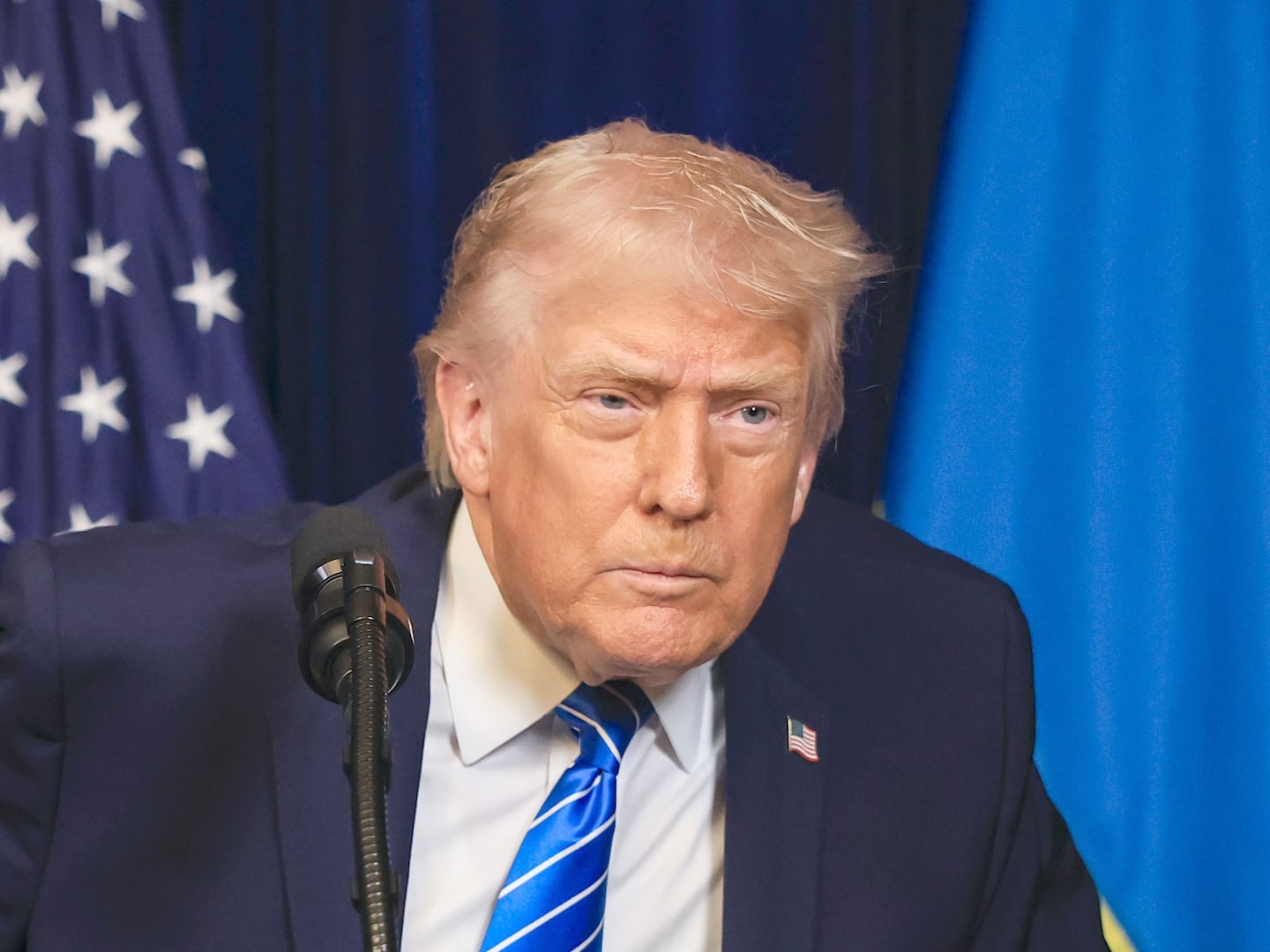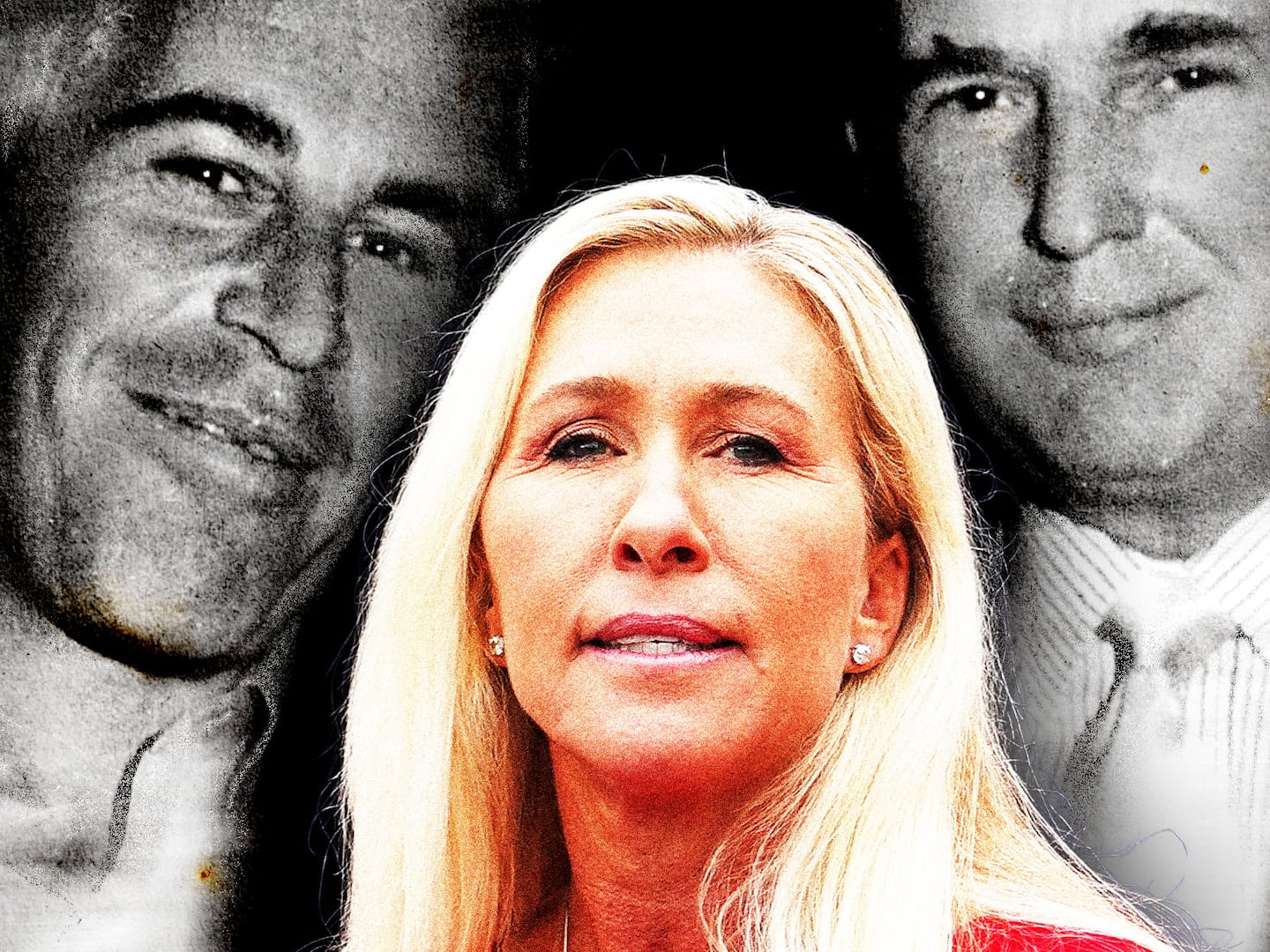Twenty minutes after leaving his job at a Brooklyn hospital on Saturday night, 32-year-old Rayne Valentine was lying in the fetal position on the sidewalk.
He’d been beaten and kicked by New York police officers, his hospital ID smeared with his own blood, he told The Daily Beast.
Valentine, a Marine veteran who worked as a chef before the pandemic hit the restaurant industry, got a job in March at Kings County Hospital Center. He has spent the past several months moving medicine and patients around the facility, as well as piling hundreds of dead bodies—many of them COVID-19 victims—into refrigerated morgue trucks.
Valentine told The Daily Beast on Tuesday that he needed a job, but, like many Americans, he also felt helpless and wanted to contribute on the front lines of the deadly pandemic. Unfortunately, his is just one of many horrifying stories of medical workers, firefighters, and paramedics who’ve been heralded as heroes—only to be tear gassed or beaten by police during the days of civil unrest following the Minneapolis police killing of George Floyd.
“They needed people,” said Valentine. “The first day I was [at the hospital], we loaded up 45 bodies in a few hours. I saw a lot of the staff having breakdowns. It was scary for a lot of people.” But Valentine felt that his military background—serving four years overseas in the Marine Corps—meant he could handle seeing things that the average American may not be able to process.
But even his time overseas did not prepare him for Saturday.
When Valentine left work, around 11:45 p.m. that night, police were clashing with protesters nearby on Church Avenue, squad cars ablaze. He was trying to avoid the chaos and would have taken an Uber or another route “if I’d known” how close the skirmishes had traveled, he recalled.
“It’s not a route I usually take. I had to take a double shift the next day, and they allow hospital workers to get hotel rooms,” said Valentine. “I was having a smoke and had my headphones in to try and decompress.”
But around midnight, he came across a “swarm” of police officers near the entrance to the Church Avenue subway station, chasing a “kid in this yellow and black hoodie,” and Valentine had his phone out recording.
“I stayed out of the way,” said Valentine. “I was up against one of the closed shops just recording. I didn’t say anything to antagonize them. I was walking backwards as they shouted ‘back up.’ And then this cop pushed me, and there were other cops hitting me on my legs and stuff too, but my head is the only thing that got seriously injured.”
In the video, which was reviewed by The Daily Beast, officers shout at Valentine to “move back” and he responds “I am moving back!”
During the beating, Valentine said, he kept getting kicked and his phone stopped recording. He said he told the officers, “I’m just trying to go home,” but that they responded: “Well, you picked the wrong time to do that.”
Then, after about 90 seconds, they stopped.
“I don’t know if it’s because they noticed my hospital ID or if it’s because they saw the blood, but they stopped, threw my phone at me, and I walked back to the hospital,” he said. “I was there for about seven hours after I got seven staples in my head and two CT scans.” Photos and images he provided to The Daily Beast show him in a hospital gown, with staples on his head, sitting on a gurney and dripping with blood. And hospital discharge papers reviewed by The Daily Beast appeared to confirm Valentine's story, noting that staples were provided for an assault.
Other than his head, said Valentine, “It’s just bruising.”
“At least I’m fortunate enough to be able to speak about it,” he added. “Could’ve been way worse.”
In the moment, Valentine said he wasn’t even scared for himself.
“I was just thinking of how heartbroken my grandmother would have been if something happened to me,” he explained. “I just lost my grandfather last year to cancer, and she’s still very raw from it. I was scared for her and how she would take it if I died.”
Multiple requests for comment from The Daily Beast were not returned by the New York Police Department prior to publication on Tuesday.
At the hospital, Valentine said some officers took a statement. Then he hired an attorney. Elena Cohen, Valentine’s lawyer, said Tuesday that she and her client are “certainly exploring all legal possibilities.”
“Someone getting seven staples in their head while complying with all laws—that seems to be excessive force,” said Cohen, a civil-rights litigator. “We’re reviewing videos and witness counts and will take whatever actions seem appropriate after that process.”
“We’re very troubled by this and also very troubled by other police escalation and use of excessive force that’s appeared over the past few days,” said Cohen. “We’ve had many reports of peaceful protesters who were hit with batons, who had their shirts ripped off, who were pushed to the ground, who had police cars drive into them.”
As of Tuesday, Valentine’s GoFundMe has raised more than $4,000. He said he’s feeling better and planned to go back to work at the hospital on Wednesday. But Valentine certainly isn’t the only emergency worker to have been attacked by police or caught up in the fight between protesters and police.
Dr. Bernard Ashby, a vascular cardiologist based in Miami Beach, Florida who has been treating COVID-19 patients, told The Daily Beast he attended a Miami protest on Saturday—where he was tear gassed by police.
“I’m not sure what exactly transpired,” said Ashby. “Stuff was being thrown both ways, and police from the precinct started dropping teargas and shooting rubber bullets at the crowd. I’ve never been tear gassed before, but I had just wanted to show my solidarity with the protesters.”
“There was such a diverse and young crowd, the majority of which were non-black, which really warmed my heart,” said Ashby. “They were screaming George Floyd’s name and embracing the cause. They got it.”
But after the tear gas, the rubber bullets, the smoke, and the fire, Ashby said it was clear people were afraid.

“They were running for their lives,” Ashby. “People out there didn’t want violence. They were scared. They just wanted their voices to be heard.”
Ashby went to another rally in Fort Lauderdale on Sunday, along with about ten other doctors, nurses, and EMTs volunteering as street medics, to provide assistance to crowds, but he said that day was without incident, at least for himself.
In Austin, firefighters, EMTs and other civilians formed Street Medics Austin, handing out water and providing on-site medical aid to protesters who’d been tear gassed—or worse. Like street medics in New York and Denver this weekend, those in Austin placed bright red medical crosses on their clothing using tape.
“If you work in emergency services, you always expect anything,” said Toby Heidel, a 46-year-old Austin firefighter who helped organize the team, in an interview with Texas Monthly. “Our agenda is helping people, that’s why we’re here … Hopefully, we can take some of the onus off emergency services, too, so the system isn’t as taxed.”
Maredith Drake, a 44-year-old mother and volunteer firefighter at regional burns (think Burning Man, but smaller), claimed in a Facebook post she had been taken to the hospital on Sunday night after Austin officers shot her in the hands with bean bag rounds from “no more than three feet away” as she was trying to help a man who’d been shot in the head and was convulsing. She said they fired at her despite the fact that she was wearing a firefighter shirt with a red and white medical cross, with another cross taped to her helmet.
“They knew I was a medic,” Drake wrote. (Drake did not immediately respond to a request for comment from The Daily Beast.)
Austin Police Chief Brian Manley said Monday that his department was investigating multiple violent police incidents involving innocent protesters, including a pregnant woman who “was struck with an impact munition to her belly.”
“That is not what we set out to do as a police department,” Manley said. “That was not what we set out to do this weekend.”
Street medic teams in D.C., Austin, Florida, and Brooklyn have all reported healthcare providers, firefighters, EMTs, and paramedics among their members. Those in Denver—some with medical training—were reportedly tear gassed while treating protesters at makeshift clinics over the weekend. And a 24-year-old volunteer street medic in New York, whose day job involves legal advocacy work, said an officer kicked her in the back while she was washing someone’s eyes out on a sidewalk near Fort Greene Park on Friday night. The street medic asked to remain anonymous for fear of retaliation from either right-wing protesters or police and said she has done multiple training sessions in basic first aid and street medic work.
“I know a lot of nurses who came out to do more comprehensive care,” said the medic, who—like those in Austin—said she wears a red cross to identify herself to both protesters and police. “I told the officer I needed a few minutes because this person couldn’t see yet, and I couldn’t move her,” said the street medic. “They eventually grabbed her by the elbow and dragged her into the park. It was clear they didn’t care she was injured or that I was helping her.”
A 25-year-old Brooklyn paralegal, who also wished to remain anonymous over fear of retribution from right-wing groups or police, told The Daily Beast he also worked as a street medic over the weekend.
“They weren’t just indiscriminately arresting people, but they were targeting people doing first aid,” the paralegal told The Daily Beast. “It’s very distressing. It feels similar to seeing them targeting journalists. It feels like a total breakdown of democratic norms, and it highlights to me that they aren’t out there to facilitate peaceful protest.”
But, like Valentine, a growing number of those caught in the fray have seemingly done their best to avoid the chaos while simply walking home from work on the front-lines of the pandemic. They, too, are afraid.
One resident who works at multiple New York hospitals, including Kings County Hospital Center, told The Daily Beast he and his colleagues were already overwhelmed by the fear of personal protective equipment supply shortages and were setting up tents again to prepare for a surge in cases following the George Floyd protests.
Now, trying to walk home when a shift ends past curfew is its own nightmare.
“When I walk home, I have to walk by a police station,” said the resident, who requested anonymity over fear of work retaliation for speaking to the press. “If there's a demonstration, who the fuck knows what’s going to happen.”
—Staff writer Pilar Melendez contributed reporting.








